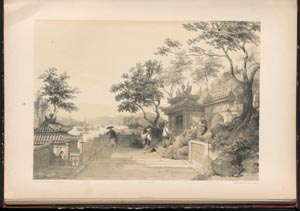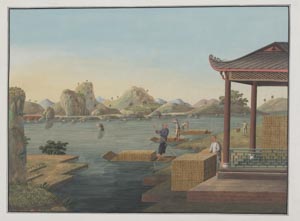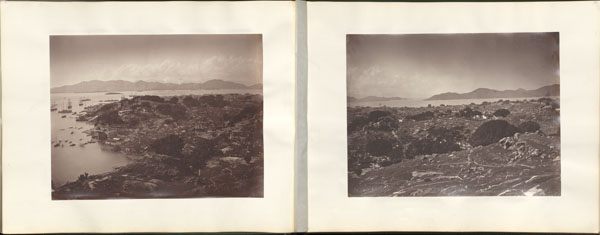China
In the eighteenth century there was enormous demand in Europe for luxury items from China and for Chinese motifs. They represented an exotic variety of sophistication, and conjured an image of China as a strange and splendid place, untainted by industrial capitalism. Ironically, many of the Chinese objects that arrived in Europe had been created by artists and artisans specifically for export, and thus in accordance with Western rather than Chinese tastes and traditions. The watercolor displayed here is one such example. It is Chinese in its maker and place of production, but its subjects and pictorial strategies are distinctly Western.
In the nineteenth century, European powers forced increased trade through military aggressions. The First Opium War resulted in the establishment of several coastal ports, the right for British citizens to reside in China, and the British occupation of Hong Kong. European and Chinese photographers set up studios in Chinese coastal cities, treaty ports, and Hong Kong, where they catered to Chinese and foreign clientele, selling pictures that, in their realism, looked nothing like those that had circulated for centuries in other media. The album shown here contains photographs by Jiu-San and E. Fong, who worked in what then was the treaty port of Amoy (now Xiamen, a city in Fujian province). Like many Chinese photographers of their era, little is known about them apart from their exceptional skill.


